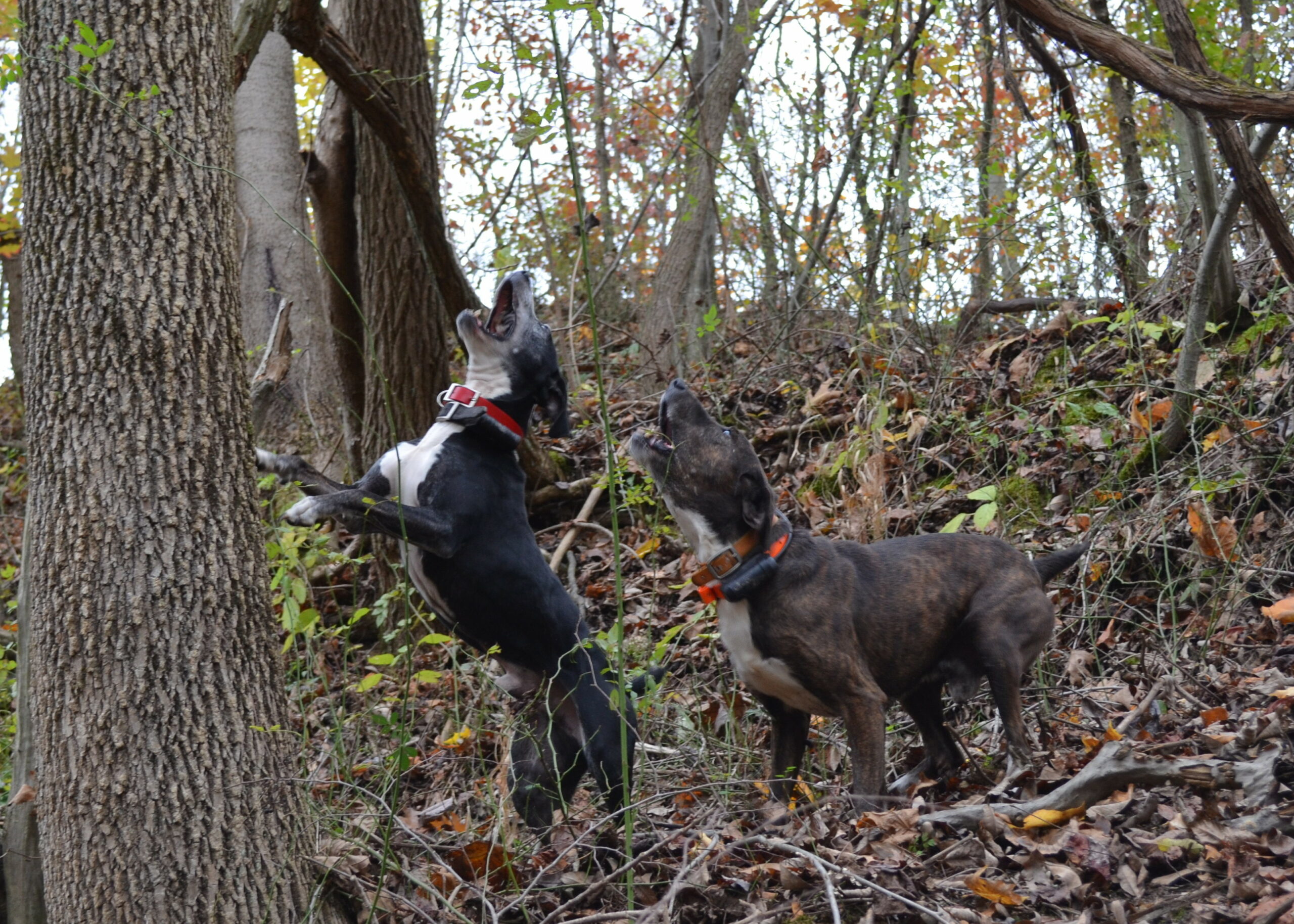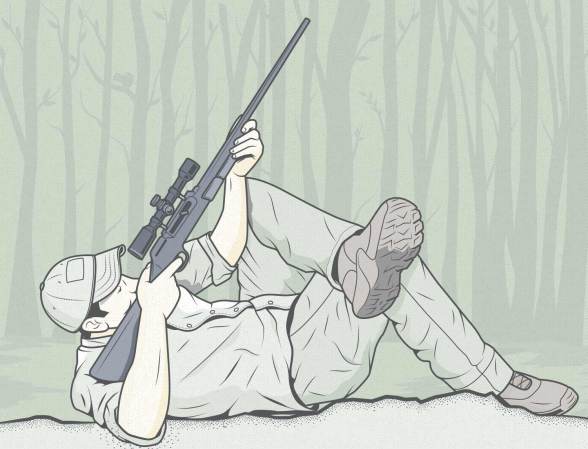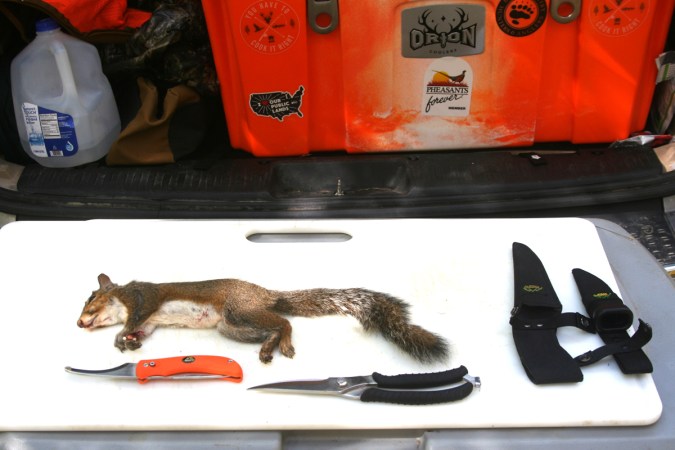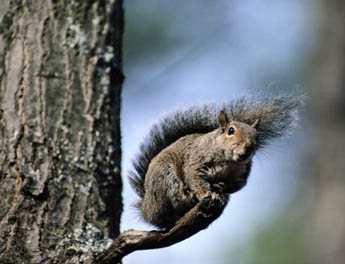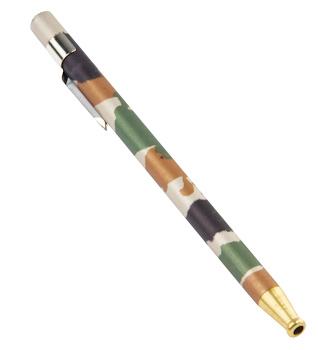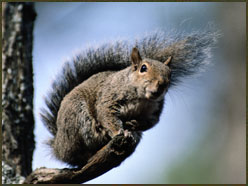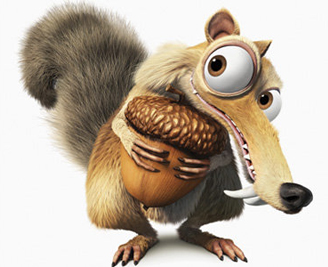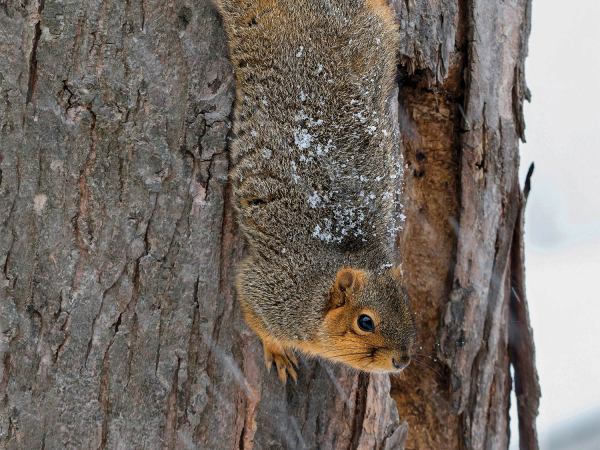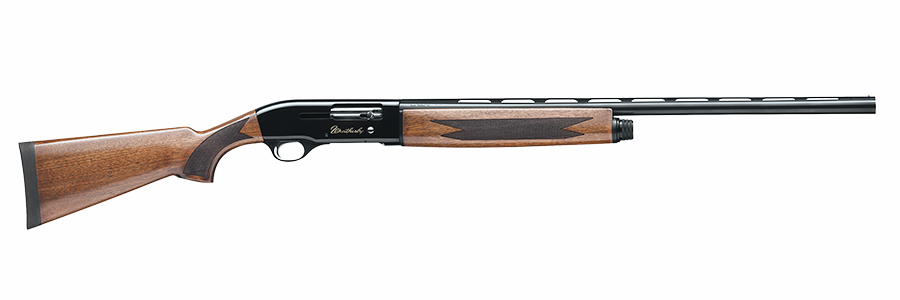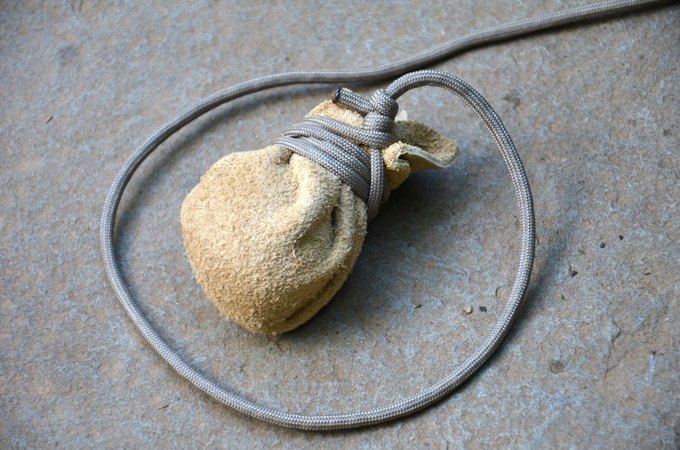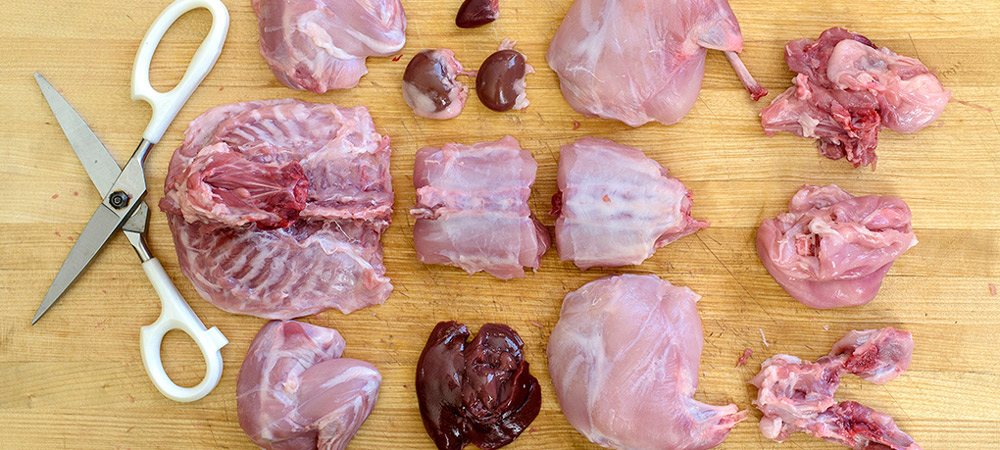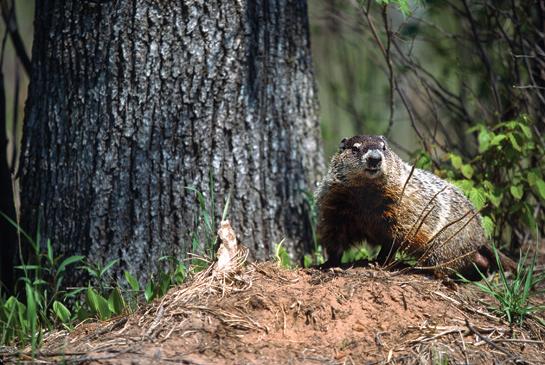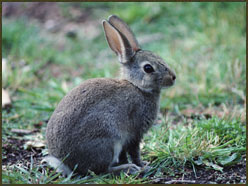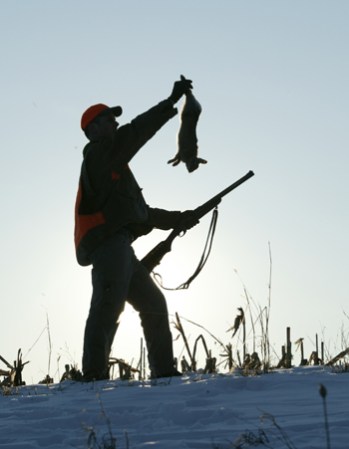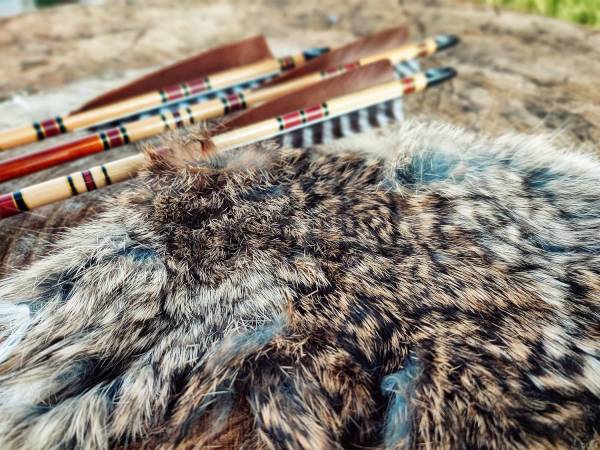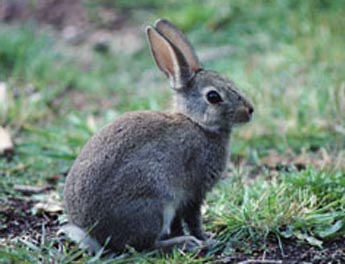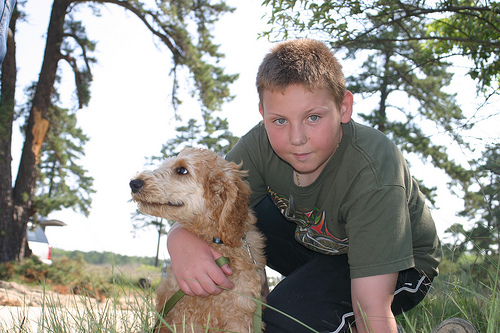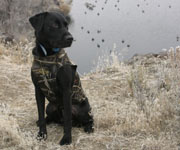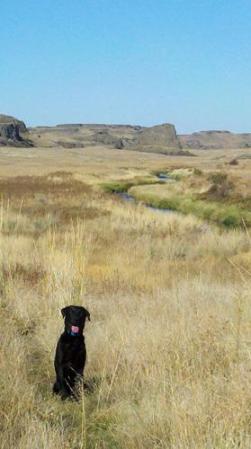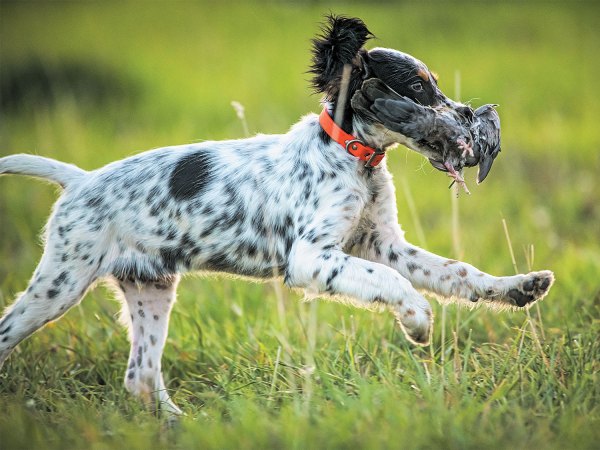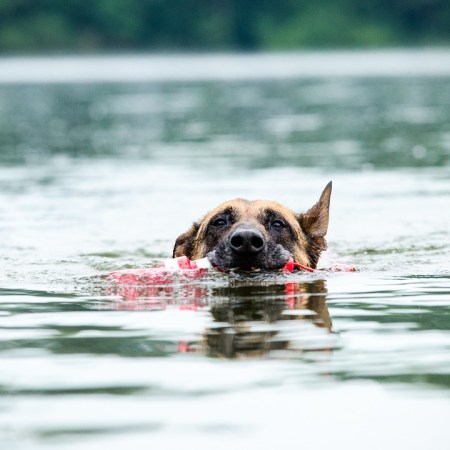Following behind a good squirrel dog is some of the most fun you can have in hunting. You’ll have more consistent encounters with squirrels, because your dogs’ nose, eyes, and ears are all better than yours, which allows them to locate game easier. Plus, squirrel hunting is still one of the most accessible sports in terms of acres to hunt and the costs associated with it.
I also think that squirrel hunting with dogs is the absolute best way to introduce new hunters, regardless of age, to the sport. First you watch the dogs dash through the forest with their noses to the ground, treeing a gray or fox squirrel. Then it’s up to you to make a quick shot with a rimfire, air rifle, or shotgun. It’s face-paced, fun hunting. Think of an NBA game that’s one long fastbreak. That’s squirrel hunting behind a dog.
If you’re in the market for a squirrel dog, there are some things you need to know. A lot of folks think that it doesn’t take much to train a good squirrel dog, and it doesn’t, but you can still ruin a good one (just like you could a retriever or pointer) if you don’t know what you’re doing. Because many of these dogs are relatively inexpensive (under $500), you might also think they all perform in a similar capacity, but that’s not the case. There are so many breeders of curs and feists (the two most common squirrel dog breeds) that it can be intimidating to know who to buy from. There are three routes you can go: buy a pup, get a started dog, or purchase a finished dog. Each option has some benefits and drawbacks. Here’s how to decide which is best for you.
The Best Squirrel Dog Breeds
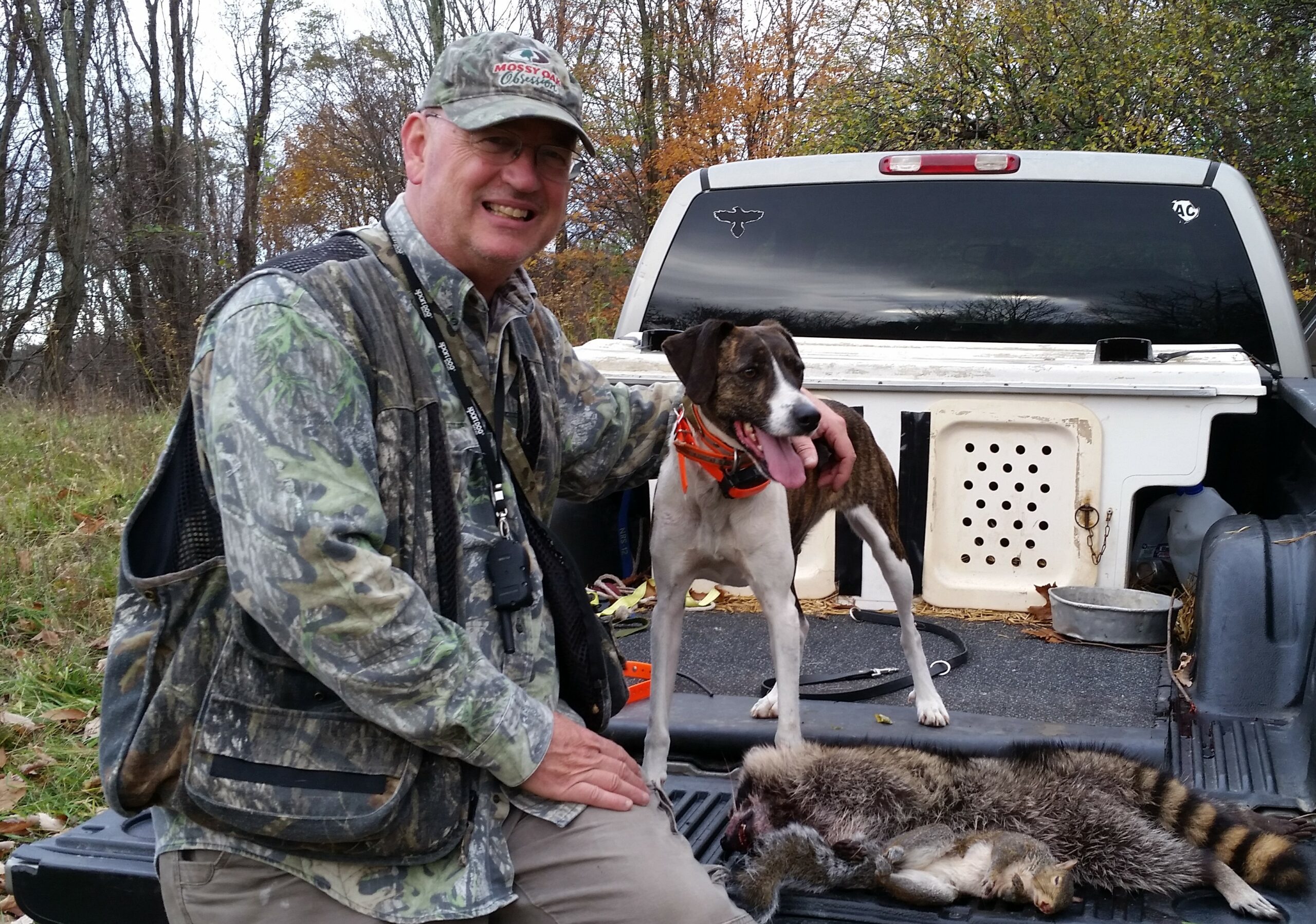
If you have never owned a squirrel dog, I’ll keep it simple. There are many breeds that can either naturally hunt squirrels or can be trained to do so. But the mountain cur and the feist are the two main squirrel-hunting breeds. They both have long histories, and fiercely loyal followings.
The differences between the cur dog and the feist go like this: In general, the cur will be a larger dog than the feist and will usually have a greater “range,” (how far he will travel out in front of you while hunting for squirrels). If you think you need a smaller dog and may hunt small woodlot areas where you don’t want the dog to venture out more than a hundred yards or so, the feist is a better choice. Curs are known to hunt with their eyes, ears, and nose. Some feists may hunt more with eyes and ears than nose. But both breeds are good treeing dogs.
Remember that every dog is a little different, and breeding plays the biggest role in how effective your dog will be in the woods. That’s why it’s so important to check into the backgrounds of breeders to make sure their dogs are legit. Don’t buy a dog before you do your homework on the breeder. Ask around about the kennel, and also ask the breeder for references—hunters who have bought his dogs previously. Ask if the breeder has video of the pup’s parents hunting before you buy.
So You’ve Decided to Buy a Squirrel Dog Puppy
Puppies are cute and do cute things, but they can also be a big headache. House breaking (if you decided to keep your dog inside) and chewing on everything but the kitchen sink is just the start. While pups can be troublesome, starting with a puppy is the best way to bond with a dog. The pup grows up with you and becomes part of the family. This helps when the dog learns what you are hunting and how you are going about it. Most good dogs catch on and will want to please their owners. But you have to spend time with that dog for the bond to develop. Leaving it in a kennel all day, and paying little attention to it doesn’t create a good hunting dog.
Also realize that both cur and feist breeds are high prey-drive dogs. They have to be exercised daily, which can be challenging if you live in a subdivision or apartment. And you have to get them on squirrels as much as possible. That can be in your yard, a nearby running trail, or a golf course (make sure you go in the evenings when golfers are gone).
How to Shop for a Squirrel Dog Puppy
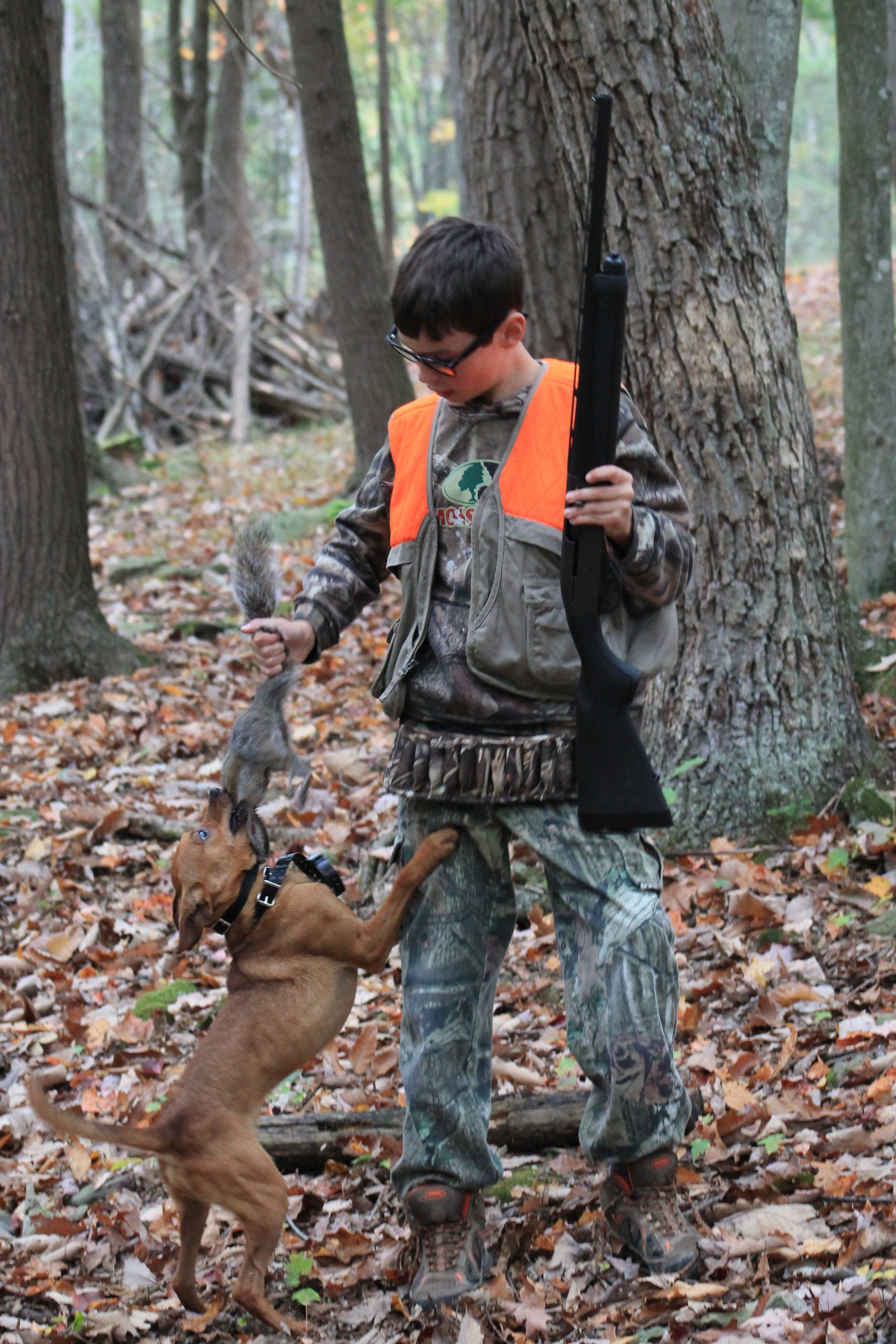
“A buyer should look to an experienced and established breeder with a track record of turning out healthy, well-socialized pups from an established line of proven tree dogs,” said Mark Morrison of Canton, Miss.
Morrison has been active in the cur dog world since 1990 and served on the Original Mountain Cur Breeders Association (OMCBA) Board of Directors for 10 years. He has won world titles in tree dog competitions, and owned Mountain State Apache, a famous stud dog amongst the mountain cur breed.
“By reaching out to long-standing members of the tree dog community, as opposed to reading and buying into internet hype, most buyers can separate the puppy-millers—in it for the money—from those that are genuinely interested in improving the breed,” Morriosn said. “In short, be wary of those breeders that pursue quantity over quality. A quality tree dog puppy is perhaps the best bargain in the canine world as they can still be had in the $300 to $500 range. If, by some chance, the pup does not mature into a quality tree dog, chances are that it will still make a [good] companion.”
If you visit the breeder and are confronted with a litter of frolicking puppies to chose from, there are a few things you can try in order to select the best one. If you have a squirrel hide or tail you can present it to the pups and gauge their interest, especially when you take it up the side of a tree, out of their reach. Look for pups that show interest on the tree and may even bark.
Watch for pups that will put their nose to the ground and appear to be tracking. Future tree dogs may go around and “check trees” looking for some scent. Remember, any of these traits are related to the age and development of the puppy. A puppy that appears extremely shy or skittish, you’ll probably want to avoid. Expecting too much from a puppy, either in choosing a pup or in its training is a common mistake with new owners. Dogs, like people, are all different and will develop at their own pace. But even puppies have some drive or interest in hunting, so spend as much time with the litter as you can.
Training a New Puppy
Adam Loudin grew up hunting with squirrel dogs and is well known in the cur world as a breeder and trainer. Loudin is the founder and co-owner of Mountain State Kennels along with his father, Chuck. Adam Loudin has trained six generations of squirrel dogs from the same line of mountain curs, including three world champions, and two dogs that are in the Original Mountain Cur Hall of Fame.
“When your pup is very young [2 to 6 months old] your goal should be to socialize your pup with both dogs and humans, expose your pup to loud noises to prevent it from being gun shy, and teach your pup obedience training that is necessary while hunting [come, lead, kennel, and feel comfortable being tied up],” Adam Loudin said. “Beyond that [6 to 12 months old, depending on the time of year a pup was born], methodology varies between trainers. But a good progression of early training might include giving your pup the opportunity to tree on a caged squirrel, turning trapped squirrels loose for your pup, or turning your pup loose on squirrels it can see in the yard or woods. Each of these techniques should be done sparingly and can create problems if overdone.”
Every squirrel dog trainer I have ever talked to cautioned me about doing too much of the caged squirrel routine. It’s okay to expose young dogs to game this way, but don’t overdo it. The squirrel dog must learn to go find and tree game on his own.
“The most important thing you can do with your pup is to simply take it hunting where there are squirrels.” Loudin said. “The best woods to hunt a pup in are free of underbrush. This will give the pup the opportunity to see game on the ground and will make it easier for the pup to hunt comfortably. Keep hunts with your pup short [30 to 45 minutes]. The attention span of most pups is brief, and when a dog is very young it doesn’t understand what it is hunting and how to tree. Exposing it to game in short periods is the best way to give the pup opportunities to learn without burning it out or getting it interested in [game you don’t want it to hunt].”
Loudin also said to try your best to end each hunt with a positive experience. Ending on a positive note reinforces the hunting drive in your dog and it keeps you more excited to take the pup hunting the next day as well. Ultimately, the best way to train a squirrel dog is to take it hunting as many days as possible and build upon its experiences. Early on, it can be difficult for some hunters to stay motivated. Dedicate yourself to hunting your pup as much as possible, preferably four to six days a week for a solid month. Don’t think that you have to kill a limit every time you go out. Start out with one squirrel and then build up. And praise your dog for treeing, even if you whiff the shot or it doesn’t end in a kill.
Avoid Making the Big Training Mistakes
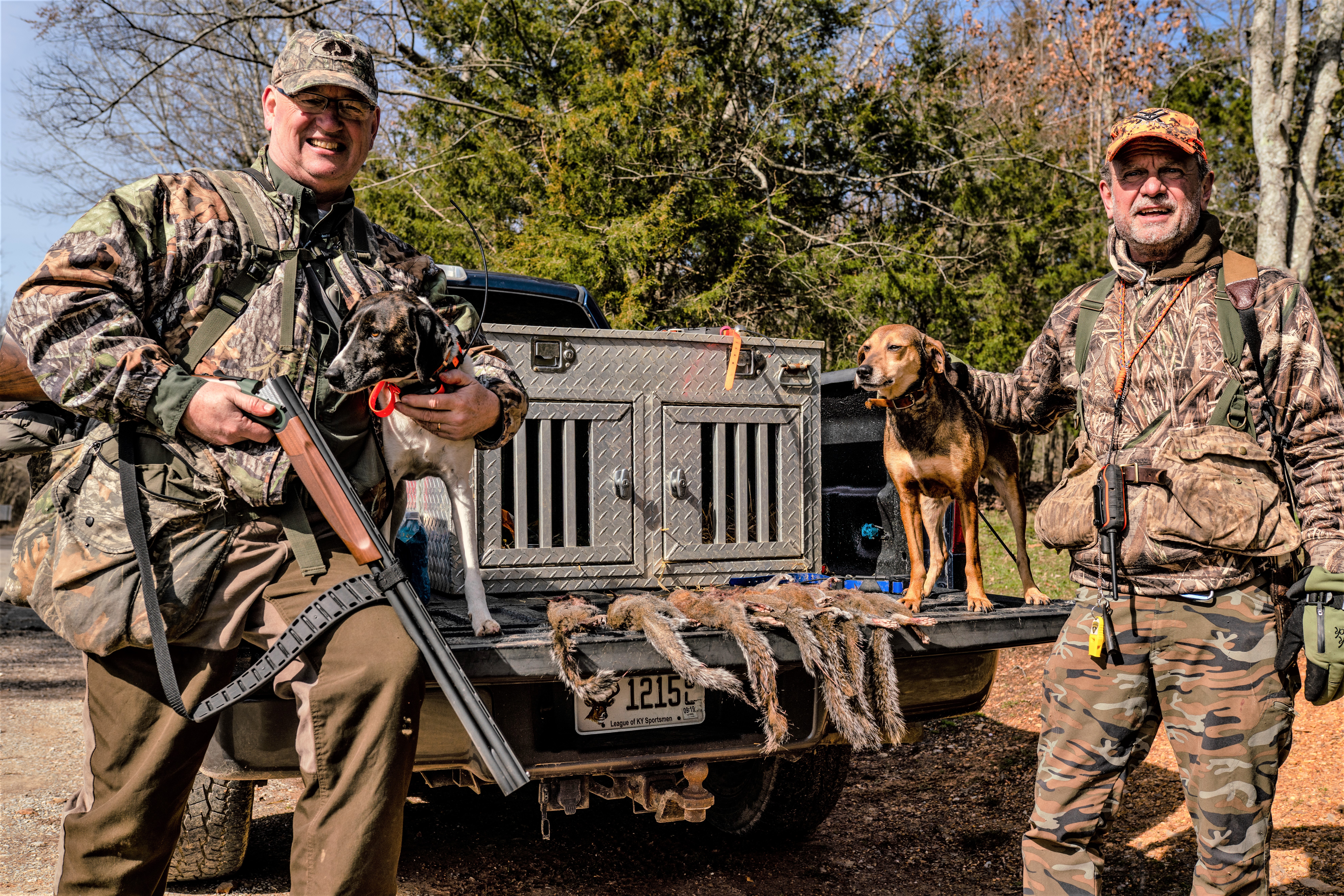
There are a few training pitfalls that should be avoided. Most center around using an e-collar incorrectly, and not having the patience to only shoot a squirrel after your dog has treed it.
“An e-collar is an incredible tool for training any hunting a dog, but ONLY if the trainer knows how to use it properly. I believe that many more dogs have been ruined or set backwards in their development by improper e-collar use than have been developed by using one correctly,” Loudin said. “Young dogs should be conditioned to understand electronic stimulation at home, in a controlled setting, not in the woods. Before using an e-collar on your pup, ask yourself, ‘What will my pup learn from this correction?’ If you can’t logically answer that question, don’t make the correction.”
One of the most common mistakes Loudin sees new trainers make is shooting squirrels that pups don’t tree. It sends a mixed message to the dog. If you shoot a squirrel without a tree, the dog may stop hunting altogether because you have taken its purpose away—locating squirrels.
“Be patient. If you put a well-bred pup in squirrels for several consecutive days, the lightbulb will turn on,” Loudin said. “Trying to make it come faster by shooting squirrels that weren’t actually treed by the pup does nothing but confuse the pup and create the false expectation that the hunter will be a part of finding the squirrel before it is treed.
“When your pup trees a squirrel, tie your pup up before you shoot it, especially if you are hunting by yourself. Many bad habits can come from shooting squirrels when a pup is loose. Tie the pup up and control the situation. You want to kill the squirrel and the pup to get the squirrel at the base of the tree it was treed on.”
If You Buy a Started Squirrel Hunting Dog
Some of us want to go through the puppy stage with a dog and some don’t. The main benefit of going with a started dog is that you get a dog that has already been exposed to game and has shown some promise.
If you are new to the squirrel dog game one thing you have to understand is the term “started” means different things to different people. Someone who just wants to sell a dog will say the dog is started if they chase a yard squirrel one time. The next guy may have a young dog that regularly trees squirrels and is well on the way to being finished.
“First of all, make sure you, as the buyer, fully understand what the seller considers to be a ‘started’ dog as such term is clearly subject to interpretation,” said Morrison. “My personal criteria is that the dog, after an adjustment period to its new surroundings, must be able to tree wild game, by itself, with some degree of regularity and stay put until I arrive at the tree the majority of the time. The dog obviously shouldn’t be overly shy or aggressive to man or other dogs and thus it would be preferable to hunt with the dog both in mixed company and alone before purchasing.
You should also have a list of questions ready for the trainer, that should include:
- How does the dog move through the woods while hunting?
- How deep into the woods does the dog hunt?
- Does the dog bark on the track?
- Is the dog a hard tree dog (does it bark at the base of the tree)?
- Does the dog stay tight on the tree, or does it mill around when treed?
- Is the dog typically on the squirrel when it trees?
- How much has the dog been hunted?
- About how many squirrels have been killed over the dog?
- Has the dog been hunted with other dogs and if so, is it ill (tends to fight) in any way?
- Is the dog independent or does it go to other dogs when they tree?
- Has the dog been obedience trained to handle easily?
“When talking to someone about purchasing a started dog, your goal should be to get a good understanding of what the dog will do,” said Loudin. “It is always best, if possible, to go hunt with a dog before you purchase it, but if you can’t, make sure the answers to the above questions aren’t vague. If they are, you are likely dealing with a person who hasn’t hunted their dog enough to understand it, or someone who is not being forthcoming about their dog.”
Keep in mind that you will pay more for a started dog. It can cost between $1,500 to $2,500.
“Budding superstars can, however, bring as much as $5,000 or more, but such prices are still generally rare,” Morrison said. “My general rule of thumb is that I want to see what the a superstar dog is doing at 18 months to 2 years old, after it has reached sexual maturity.”
Read Next: 9 of the Best Sub-Gauge Shotguns for Squirrel Hunting
Buying a Finished Squirrel Dog
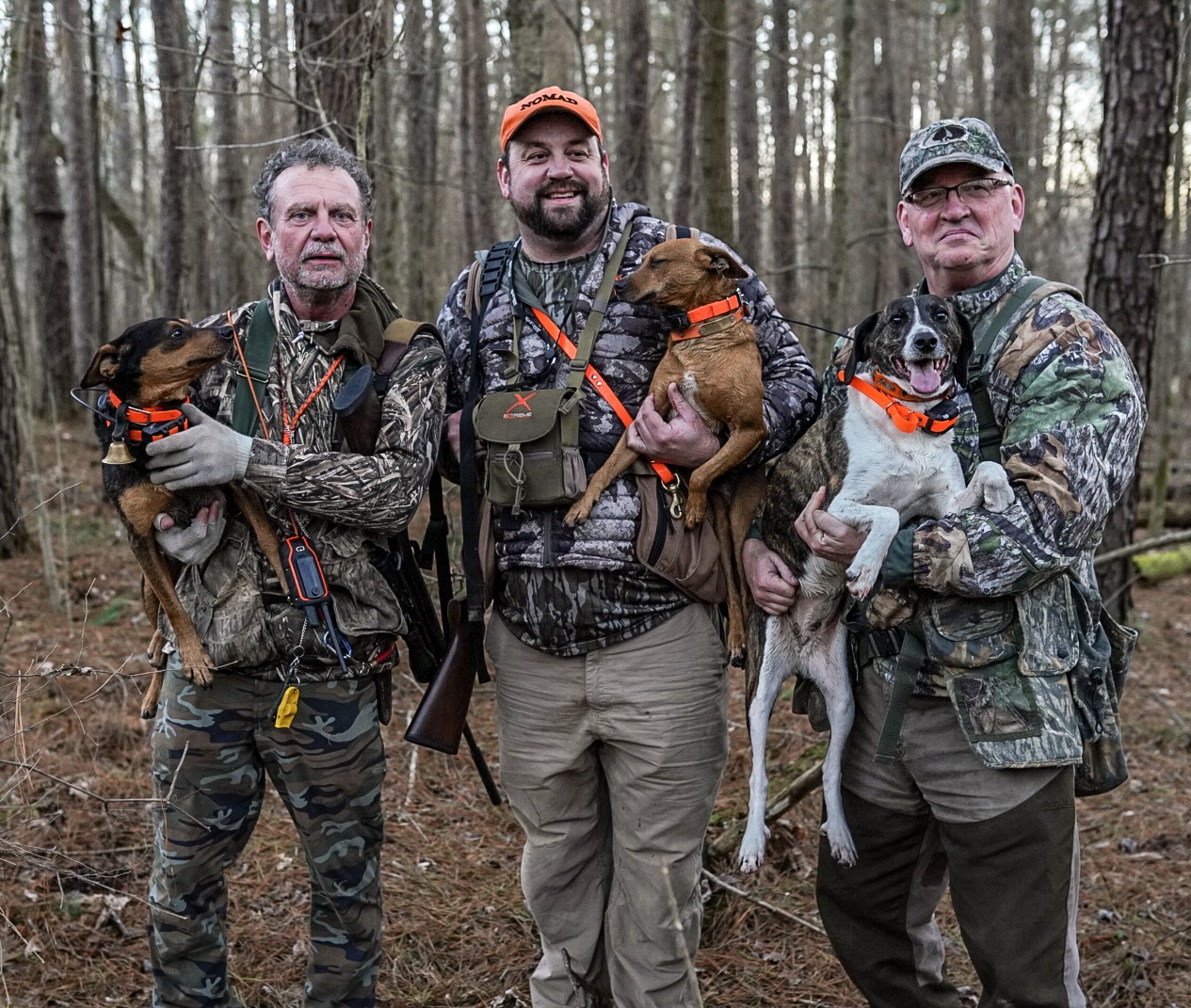
A finished dog should be an adult dog that can do it all. This dog should be able to find and tree squirrels on his own. He should not run off game, especially deer, and should have a good understanding of obedience commands, load in the truck well, be used to gunfire, and not be aggressive with other dogs, especially at the tree. The finished dog should be a dog you can take to the woods and kill squirrels with consistently.
You may find a breeder or hunter in the situation that owns an older dog that they want to sell. This dog may make a very acceptable “meat” dog and will tree you plenty of squirrels if given the chance. Dogs in this class go for all different prices, but be ready to pay more (at least $2,500, but likely more). Just one word of caution: A mature dog may give you several good years, or not. After all, no good dog lives as long as we want it to, and older dogs are more susceptible to injury.
Most of us just want a dog that hunts; that becomes our hunting buddy and a good family dog. You can have all those things as long as you follow the rules I’ve laid out and do the legwork necessary to owning an exceptional squirrel dog.
